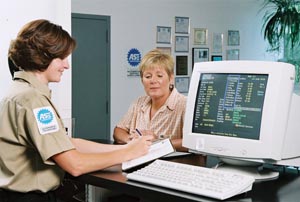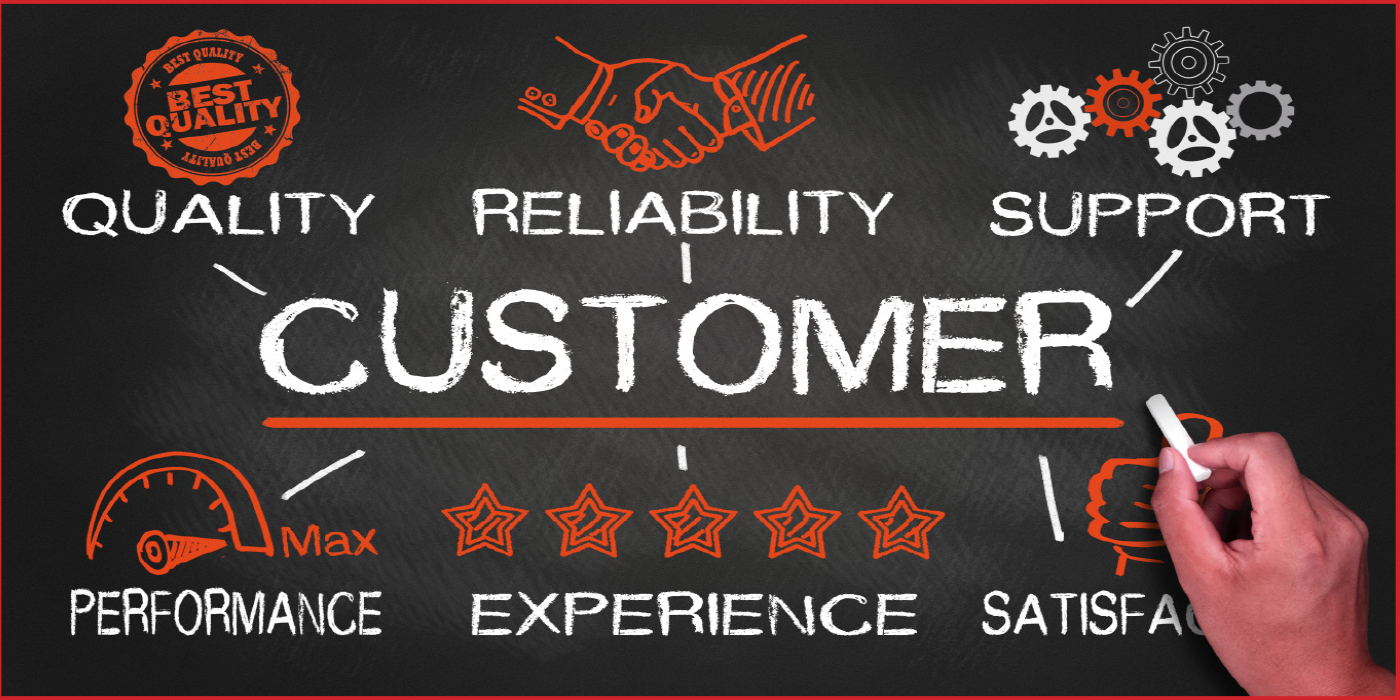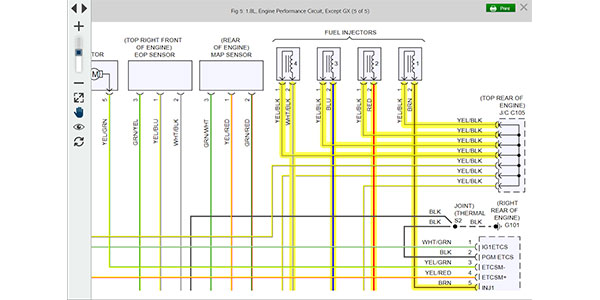By Larry Carley
Technical Editor
It’s hard to imagine any automotive repair shop doing business today without the benefit of multiple computers. Yet some shops continue to do business and fix cars the “old fashioned way” with no computers whatsoever. I can’t help but wonder how much longer some of these shops will stay in business.
 The computer has become an essential business tool not only for the front office, but also in the service bay. Business management software makes it so much easier to keep track of customer appointments, customer records, billing, invoices, parts orders, repair orders, commissions and payroll than traditional paper filing and bookkeeping systems. Many business management programs also allow you to print repair estimates and receipts for customers, and to print out warranty information or even diagnostic test results for customers, too. Some of these programs even allow you to analyze your shop’s productivity and profitability so changes and improvements can be made where needed.
The computer has become an essential business tool not only for the front office, but also in the service bay. Business management software makes it so much easier to keep track of customer appointments, customer records, billing, invoices, parts orders, repair orders, commissions and payroll than traditional paper filing and bookkeeping systems. Many business management programs also allow you to print repair estimates and receipts for customers, and to print out warranty information or even diagnostic test results for customers, too. Some of these programs even allow you to analyze your shop’s productivity and profitability so changes and improvements can be made where needed.
So why isn’t every automotive repair shop using some type of business management software?
One excuse is a reluctance to change. Changing from one type of bookkeeping system to another is never easy. To some, the notion of switching from paper to a computer seems to too painful to consider — especially if they have little or no experience with computers and are intimidated by technology.
There is always a learning curve when making a change, whether you are upgrading old software or changing from one type of management program to another. But change in this business is inevitable, so the sooner you accept it and learn to deal with it, the better.
Actually, much of the software that is designed for small businesses today is not difficult to learn. Depending on the price and sophistication of the software, training may even be included. The best programs are those that have been developed specifically for the auto repair business. Such programs are much more user-friendly and useful than “generic” software written for general business use.
Business management software typically has a number of “modules” that are bundled together. In addition to the basic accounting and financial components (accounts payable, accounts receivable, payroll, profit/loss statement, etc.), a good business management program should also include “point-of-sale” features such as the ability to create a repair order, a repair estimate and a final receipt. Some programs may also track the job itself as well as parts ordered for specific jobs. The software should also create a permanent record for each customer and vehicle, with the ability to add comments and other documentation as needed.
Some shop management programs may also have an inventory management module for tracking parts that are stocked in house, or for sharing parts with other store locations. The parts management software may also provide an online link with your parts jobber for ordering parts.
Another feature to look for would be a “Customer Relationship Management” module that allows you to communicate with your customer base. This may include sending service reminders to customers, asking customers for feedback after repairs have been made, sending customers a thank you note or a special offer to generate repeat business, sending customers special announcements such as extended business hours or new services that are being offered.
When shopping for business management software, it’s important to look for a product that is fully “integrated” so all of the various modules can share information and work together seamlessly. Many programs are offered in various “levels” such as standard, advanced and professional. The higher the level, the more the features (and the higher the price). There’s no need to buy a top-of-the-line program if all you need is some basic accounting and financial management software. You can always upgrade later. On the other hand, if you want to make the most of what’s available, then shop for a package that can deliver everything you want.
A good place to shop for business management software is online. Do a keyword search for “Auto Management Software” and you will find links to numerous suppliers’ websites. Many of these companies offer demo versions of their software you can download to evaluate.
You can also find business management software vendors at many industry trade shows. The nice thing about attending a trade show is that you can ask questions to a real live person and get a hands-on demonstration of their product.
You can also ask others who are in the auto repair business what kind of business management software they have, and what they like (and dislike) about the programs they use.
Finally, before you make your purchasing decision, ask about training, technical assistance and upgrades. Are any of these included in the price? Or will you have to pay an additional fee every time you need help or a new upgrade is released?
Information Access
A computer is also essential in the service bay so technicians can access online service information. A few clicks of a mouse can help you find information that might take much, much longer to find in a manual — if it is even available in printed form. Paper manuals are going away, and in some cases have been discontinued altogether. The vehicle manufacturers are going “paperless” with their service information for several reasons: to reduce costs (paper and printing are expensive), to speed up information access and to improve accuracy.
Once a paper manual is printed, it can’t be changed until the next printing. Even then, the older information may remain on the shelf forever unless the old manual is discarded and replaced with a more recent edition. If vehicle manufacturers revise their service specifications (which they often do), there’s no way to know your manuals are out-of-date unless somebody tells you. That’s why most service information today comes on DVDs or CDs (which may be updated quarterly), or is accessed online via the vehicle manufacturer’s own website.
Aftermarket service information providers such as ALLDATA, Autodata, Identifix and Mitchell 1 offer easy access to a broad range of service information options. The subscription fees they charge are very reasonable considering all the information you can get and what it would cost to buy the same information in paper manuals.
If you’re not familiar with these services, you should be. Typically, you can search for service information by the year, make and model of the vehicle, and by system (brakes, engine, etc.) and/or by symptom. These services also compile lists of OEM technical service bulletins (TSBs) that contain a wealth of information regarding fixes for all kinds of driveability, emissions and other problems. Some problems may even be “unfixable” without a TSB.
One of the most underutilized resources for technical service information are the official OEM technical websites. EPA regulations require the OEMs to make available all emissions-related service information online. The vehicle manufacturers are allowed to charge a “reasonable” subscription fee to access this information, which typically costs $20 to $25 per day, or $50 to $300 a month for unlimited access. Some, such as Hyundai and Kia, charge no fees at all. A complete list of OEM websites can be found at the National Automotive Service Task Force website (www.nastf.org).
Technical Help
Sometimes a problem will stump even the most experienced technician. All the diagnostic tests may lead to a dead end. Using a computer to go online, a technician can turn to various sources for help.
Another great resource for finding technical help is the International Automotive Technicians’ Network (www.iatn.com). Here, technicians from all over the world can share their expertise in various online forums. You can post a problem (with a detailed explanation) online and receive e-mail answers from other technicians who may have encountered the same problem. iATN maintains an extensive archive of repairs and fixes, as well as a library of scope patterns for “good” and “bad” sensors for diagnosing driveability problems.
Other technical resources that can be quickly and easily accessed online include automotive articles that have appeared in Babcox magazines (go to www.babcox.com, click on a magazine and search past articles). Answers may also be found in discussion forums on numerous automotive websites.
Looking for a new tool, used tool or a hard-to-find part? Going online to search parts and tool vendors often yields results that may be impossible to find by other means.
A computer in the service bay can also be used for training purposes to view or take online technical courses from auto parts suppliers, to watch training DVDs, or to study for upcoming ASE certification tests.
A shop owner we talked with recently explained that he takes advantage shop downtime for tech training behind the computer. During a Februrary snow storm, a few bays were empty, so his free techs spent the day taking online technical courses.
Work or Play?
One reason why some shops that have a computer in the front office don’t have computer access in their service bays is because they fear technicians will waste valuable time “playing” on the computer instead of using it for work-related purposes only. The solution here is to use software that restricts Internet access to certain specified websites. Also, a formal “computer use” policy should be distributed telling employees what kind of computer use is allowed and what is not.
Besides accessing information online, a computer in the service bay can also be loaded with diagnostic software that allows it to function as a code reader or scan tool. Most of the software that is currently available for this purpose is limited to reading fault codes, OBD II monitor status and sensor values. It usually lacks the capabilities of a professional bidirectional scan tool. But this is always subject to change, and as time goes on, we will see more and more PC-based diagnostic software with advanced capabilities.If your shop does any reflashing of vehicle PCMs or other onboard modules, a computer is an absolute must. Some OEMs provide their reflash data on a CD. Others supply it online as a download. Either way, the reflash data has to go through a PC into a scan tool or J-2534 pass-thru reflash tool before it can be installed in the vehicle.
Digital Photography
Digital photography is even finding its way into the service bay. The price of digital cameras has fallen drastically in recent years, and you can buy a pretty good camera today for less than $150. The images captured by a digital camera can be used for a variety of purposes: to document repairs, to e-mail a photo of a worn-out, broken or damaged part to a customer if you need an additional repair authorization, to e-mail a photo to a parts supplier if you are having a warranty issue, to e-mail a photo to your parts supplier if they are having a hard time matching a certain replacement part, and to refresh your memory as to how something you’ve taken apart earlier goes back together.
Drum brake hardware can sometimes be tricky to reassemble, especially if you’re working on a car you’ve never seen before. The answer here is to simply snap a photo of the brake before you take it apart. If you get distracted and don’t get back to the job until later, you may have forgotten how the hardware came apart. A quick glance at the image in the camera can refresh your memory and prevent a mistake that might cause a comeback later.Most digital cameras have an LCD screen on the back to view the images captured by the camera. Images can be downloaded to a computer by a cable, or by removing the memory card from the camera and inserting into a special card reader slot in the computer or an external device. The image can then be stored with the customer file for future reference, e-mailed to the customer or parts supplier, or printed.
We’d like to hear from you. How have the computers in your shop made an impact in your business? Do you have advice for those shops out there that still haven’t converted to the electronica era? What software/hardware has helped the most? E-mail your experiences and/or suggestions to Jennifer McMullen, Editor, TechShop, at [email protected].






